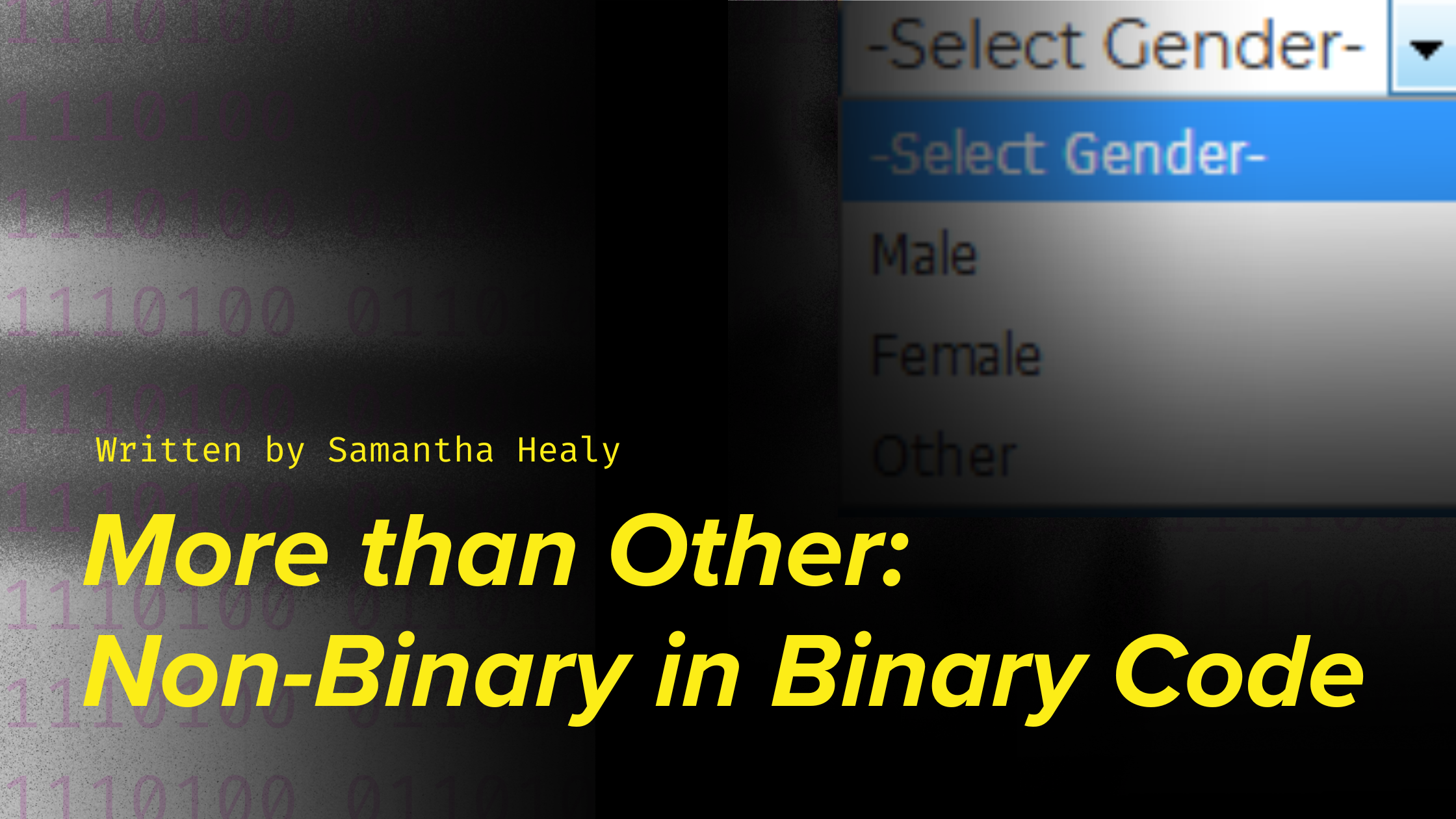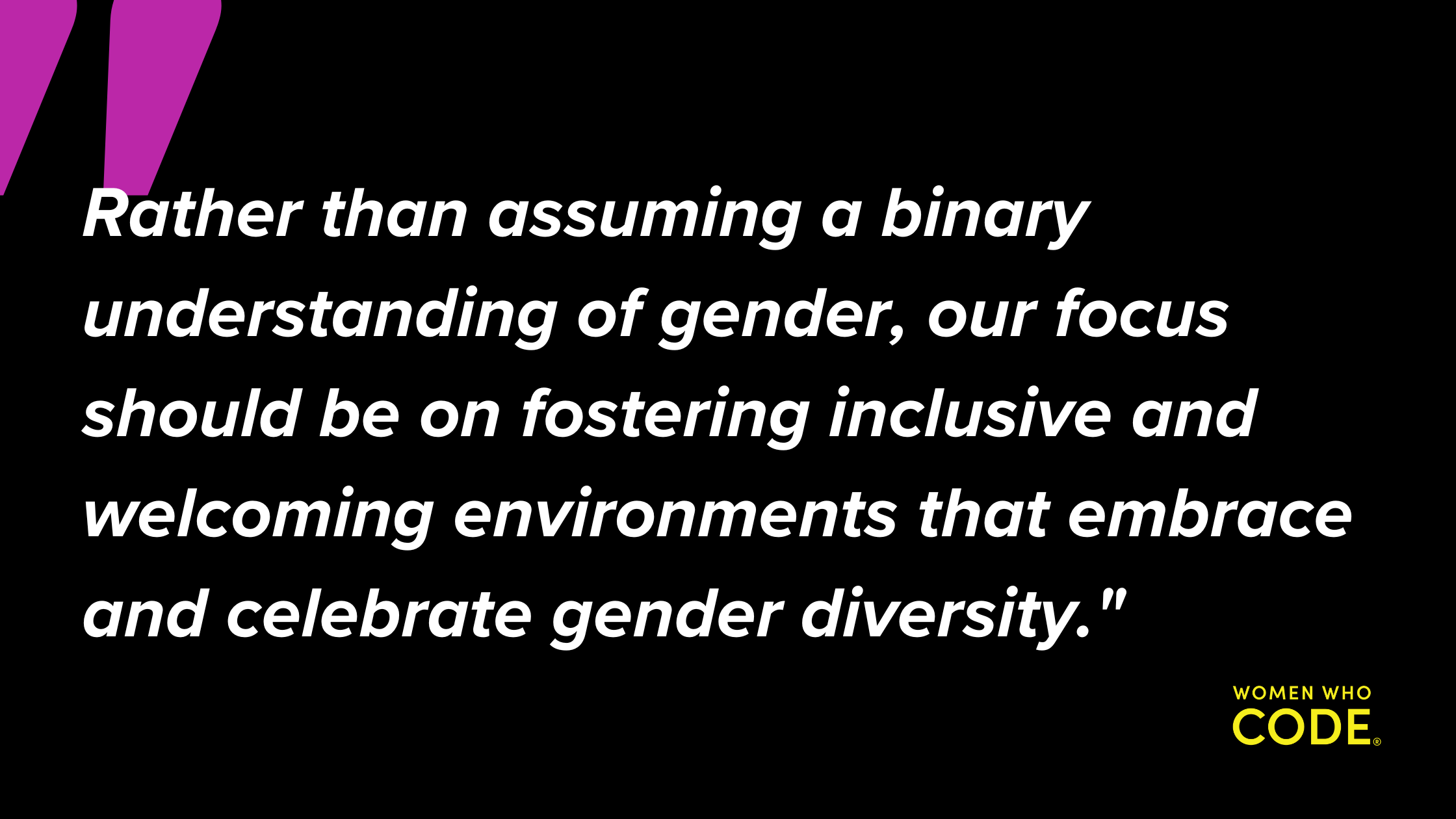More than Other: Non-Binary in Binary Code
Written by Samantha Healy they/them

I grew up in the South, and non-binary wasn’t in my vocabulary or spoken of around me. It wasn’t until I left my hometown, Atlanta, GA, for college that someone asked about my gender. I was sitting in a circle of other freshmen, and my orientation leader asked me three common icebreaker questions.
Where are you from?
What are your pronouns?
What is your favorite food?
At that moment, I thought, “Oh! What a hard question. What is my favorite food?” Right? I had never been questioned about my pronouns or gender. So I said, “She/her, and I’m from Georgia.” I quickly used she/her because that’s all I knew. It was the only option that I was ever given. And then, a few of my peers said their pronouns were ze/zir, they/them, which was new to me.
Before orientation, I was so excited to get back to my dorm to unpack the last few boxes left, hang up all the posters on my wall, and call my mom to tell her about my first day. But after that icebreaker, I really wanted to get back to my computer to look up what ze/zir and they/them pronouns meant. As links popped up for LGBTQIA+ websites, I had one of those ‘OH!’ moments.
There’s a name for what I’ve felt my entire life? What I felt growing up was common?
I didn’t come out publicly as non-binary until I was out of college. But during college, I was internally nonbinary. Externally, I was sitting in a doctor's office circling the F in the M/F box or in front of my computer filling out job applications selecting ‘woman’ in a drop-down box. I was choosing what I thought I had to be. And then, eventually, a third option showed up-Other.
Again, I was pushed into a box that didn’t reflect how I identified. My frustration with the continuous erasure of my identity stems from that box. 
Like many other fields, coding was designed with a binary gender system in mind. This can make it difficult for nonbinary folks to feel seen and included in the industry. For example, many coding languages use gendered pronouns in their syntax, such as "he" and "she." Additionally, some coding platforms may require users to select a binary gender when creating an account, which can be exclusionary to those who do not identify as male or female.
Gender is embedded within various technological infrastructures, particularly in digital forms utilized in educational, commercial, medical, and governmental domains. On June 15, 2017, Oregon became the first state in the U.S. to announce it would allow a non-binary "X" gender marker on state IDs and driver's licenses. Imposing a binary choice for gender categories can have detrimental effects that impose restrictions and cause harm, especially to individuals who do not align with these categories. Such practices foster feelings of marginalization, discrimination, and erasure of identity.
Instead of requesting a user's gender in a mandatory drop-down menu with only two options, consider the following:
Make it Optional
It's as simple as that! Eliminate the requirement by removing the red asterisk. Most individuals will still provide their gender information, those who prefer not to can choose not to disclose it. Establish a plan to handle and accommodate those who opt out of declaring their genders, and you're all set.
Eliminate the practice of inquiring about gender altogether:
Gender is irrelevant, but you think it makes for an interesting statistic.
-
Gender as a Construct: Yes, there are more than two genders. Gender is a social construct with a range of identities beyond the traditional binary understanding of males and females. It’s vital to recognize that individuals may identify as non-binary, genderqueer, or genderfluid.
-
Breaking Free from the Patriarchy: By removing gender as a relevant factor, we can challenge the power dynamics and biases associated with the patriarchal structure, advocating for a fair and inclusive society.
-
Protecting Privacy and Autonomy: Asking about someone's gender can invade their privacy and limit their autonomy. Eliminating the need to require gender respects an individual's right to define and express their gender identity on their own terms.
-
Reducing Bias and Discrimination: Gender-based inquiries could unintentionally lead to bias and discrimination in various areas such as employment, education, healthcare, and housing. Removing gender as a factor could minimize the potential for prejudice and discrimination.
Explore additional options:
Your drop-down menus can have more than two options.
-
“Other” is a poor choice for a third option.
-
A more empowering option would be “Decline to State” (or something similar) — then it’s not about nonconformity but privacy.
-
Keep it simple. ‘Non-Binary.’
-
They/Them
“I’m non-binary; do I have to use they/them pronouns?”
Of course not! There are so many other options. To name a few:
-
Ze/hir
-
Zi/Zer
-
Xe/xem
-
Hy/hym
-
Co/cos
Recognizing the complexity and diversity of gender identity is crucial, as individuals should be free to define and express their gender authentically. Rather than assuming a binary understanding of gender, we should focus on fostering inclusive and welcoming environments that embrace and celebrate gender diversity.
To address this issue, it's imperative for the tech industry to proactively strive toward creating more inclusive coding practices. These practices may include using gender-neutral language in coding and on digital platforms, and offering nonbinary gender options for users. Rather than just ‘other’ or ‘X.’
By doing so, the industry can create a more welcoming environment for all individuals, regardless of gender identity.
I am more than ‘Other.’